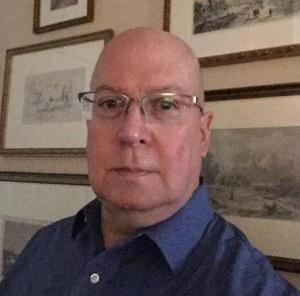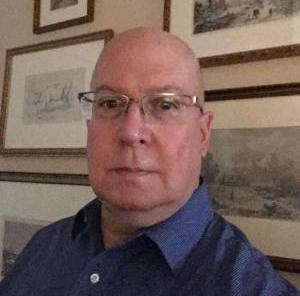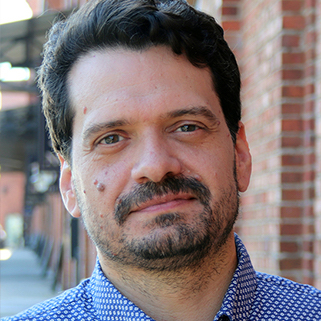John J. Taormina
John J. Taormina

John J. Taormina received his BA in Art History from John Carroll University and MA in Art History from George Washington University. From 1982-1999, he was head of the visual resources/image collections at George Washington University, Oberlin College, The Ohio State University, and the University of Michigan. Since 2000 Taormina has been the curator of visual resources in the Department of Art, Art History & Visual Studies at Duke. As the head of the Visual Media Lab at Duke, he oversees all aspects of the extensive digital and analog image collections. He also manages the department’s communication program and the department’s exhibition spaces in Smith Warehouse.
Taormina served for ten years as editor of the VRA Bulletin, the professional journal of the Visual Resources Association (VRA), the international organization of image media professionals, and served on the VRA Executive Board for seven years. In 2005 he received both the Distinguished Service Award and the Nancy DeLaurier Achievement Award from the Visual Resources Association.
Taormina has been the metadata and image consultant to the Medieval Kingdom of Sicily Image Database project since its inception in 2011. In 2015, he co-organized with Caroline Bruzelius the Wired! symposium, “Apps, Maps & Models: Digital Pedagogy and Research in Art History, Archaeology & Visual Studies.” Since 2018, he has been part of the Building Duke Bass Connections project team. After three years of research, John published his 150-page Digital Humanities Bibliography in 2019, with ongoing revisions and additions.
Current Collaborations
Scholarship
Publications
- Taormina, John J. VRA Bulletin. Guest Editor, special issue on “Digital Humanities and the Visual,” (44:2, Winter 2016).
- Taormina, John J. Review: Anne Burdick, Johanna Drucker, Peter Lunenfeld, Todd Presner, and Jeffrey Schnapp, Digital _Humanities (Cambridge: MIT Press, 2012) in VRA Bulletin 43:2 (Winter 2016).
- Taormina, John J. VRA Bulletin, Guest Editor, special issue on “New Directions, New Challenges,” (37:2, Summer 2010).
- Taormina, John J. VRA Bulletin, Guest Editor, special issue on “Digital Collaborations,” (35:2, Summer 2008).
Public-Facing Scholarship
- Taormina, John J., with Alexander Strecker, Katherine McCusker, and Michael O’Sullivan. A Digital Humanities Bibliography. 2019.
- Bruzelius, Caroline, and Paola Vitolo, et al. The Medieval Kingdom of Sicily Image Database. http://kos.aahvs.duke.edu/.
Presentations
- Bruzelius, Caroline, William Broom, and John Taormina. “The Medieval Kingdom of Sicily Image Database Project: From Conceptual Design to Management.” Paper presented at Digital Matters in Medieval and Renaissance Studies, Duke University, Durham, NC, April 6-7, 2018.
- Taormina, John J. “Project Creation: Making Concept into Reality,” in The Medieval Kingdom of Sicily Image Database Project: From Conceptual Design to Management. Symposium on Digital matters in Medieval and Renaissance Studies. Duke University, April 2018.
- Taormina, John J. “Reconfiguring Knowledge: Making the Digital Humanities Visual.” Session Organizer and Moderator. Annual Meeting of the Southeastern College Art Conference, Pittsburgh, PA, October 2015.
- Taormina, John J. Digital Humanities Special Interest Group. Co-organizer and Co-moderator. Visual Resources Association annual conference, Denver, Co, March 2015.
- Taormina, John J. “Cultural Heritage in a Computational Environment: Making the Digital Humanities Visual.” Session Co-organizer and Co-moderator. Visual Resources Association annual conference, Denver, Co, March 2015.
- Taormina, John J. and Jenni Rodda. “Cultural Heritage in a Computational Environment: Making the Digital Humanities Visual.” Session organized at the Annual meeting of the Visual Resources Association, Denver, CO, March 2015.
- Taormina, John J. “The Politics of Change: Digital Humanities and the Visual Arts.” Session organizer. Art Libraries Society of North America annual conference. March 2014. Washington, DC.
- Taormina, John J. “Digital Technologies and the Visual Arts: Reconfiguring Knowledge in the Digital Age.” Paper presented as part of the panel “Making the Digital Humanities Visual: Opportunities and Case Studies” at the Annual meeting of the Visual Resources Association, Providence, RI, April 2013.
- Taormina, John J., and Mark Pompelia. “Connections and Transformations: New Technologies in the Arts and Humanities.” Session organized at the Annual Meeting of the Southeastern College Art Conference, Greensboro, NC, October 2013.
- Taormina, John J., and Mark Pompelia. “Enhancing Education Beyond the Classroom Experience via Digital Technologies.” Session organized at the Annual meeting of the Visual Resources Association, Providence, RI, April 2013.
- Taormina, John J., and Mark Pompelia. “When the Past Collides with the Present: Moving Beyond the Single Classroom Experience via Digital Technologies.” Session organized at the Annual Meeting of the Southeastern College Art Conference, Durham, NC, October 2012.




